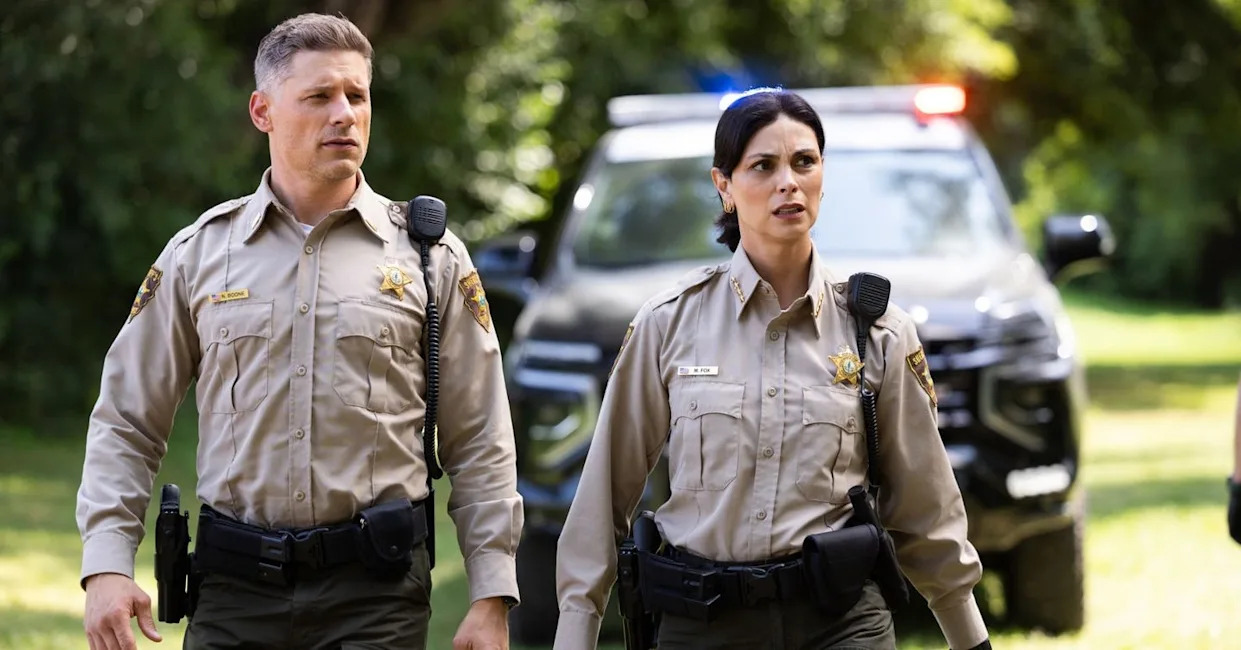
The Unsung Canvases: How Canadian Backdrops Built Schitt’s Creek (and Surprised Us All)
Few television shows have captured hearts and garnered critical acclaim quite like Schitt’s Creek. Its heartwarming narrative of a formerly wealthy family finding their footing (and themselves) in a quirky, rural town resonated globally. While the show’s official title is Schitt’s Creek, the spirit of a surprising “sheriff country” – a place transformed and revealed – perfectly encapsulates its unique production story. Viewers often imagine the fictional town nestled somewhere in the American Midwest, a picture-perfect, if slightly ramshackle, small-town idyll. The true brilliance, and indeed the delightful surprise, lies in the fact that this quintessentially North American small town was painstakingly pieced together from a mosaic of unexpected Canadian locations, primarily within Ontario, demonstrating a profound cinematic alchemy that turned the ordinary into the iconic.
The first layer of surprise stems from the sheer audacity of creating an entire “American” small town entirely within Canada. The show’s creators, Daniel and Eugene Levy, consciously chose to film close to home, opting for the familiar landscapes of the Greater Toronto Area (GTA) and its surrounding smaller towns. This wasn’t about finding glamorous, movie-set backdrops; it was about discovering the understated, often overlooked charm of everyday Canadian life and transforming it through the lens of Schitt’s Creek. The success of this endeavor lies in its subtle sleight of hand: the rolling Ontario farmlands and quiet main streets perfectly mimicked the generic, timeless feel of a North American rural setting, allowing the character-driven narrative to truly shine without geographical distractions.
Perhaps the most emblematic example of this surprising transformation is the iconic Rosebud Motel. For fans, this slightly dilapidated, yet ultimately charming, roadside lodging became a character in itself – a symbol of the Rose family’s humble beginnings and their slow journey towards genuine connection. The reality? The Rosebud is, in fact, the Hobart’s Motel (now officially the Rosebud Motel), located in the tiny village of Goodwood, Ontario. Situated on a quiet stretch of Highway 47, surrounded by fields, the real motel possesses the exact understated, time-worn quality that made it the perfect canvas for the Rose family’s reluctant new home. Seeing its real-world counterpart, stripped of the show’s vibrant lighting and familiar characters, reveals its humble origins and underscores the magic of television production – a testament to how art can imbue a simple structure with profound emotional resonance.
Goodwood, Ontario, served as more than just the site of the Rosebud. This picturesque hamlet became the very heart of the fictional Schitt’s Creek. The town’s quaint, single-street downtown was expertly utilized, with its existing buildings morphing into key locations. The Goodwood General Store became the show’s Schitt’s Creek General Store, where Moira Rose famously struggled with small-town commerce. The Goodwood Public School stood in for the Schitt’s Creek Town Hall, where Roland and Johnny navigated civic duties. Even the Cafe Tropical, the local greasy spoon where much of the town’s gossip and everyday drama unfolded, was a real restaurant in Goodwood. These are not purpose-built sets; they are genuine, functioning establishments that, for six seasons, played their part with unassuming brilliance, their authentic Canadian charm contributing an unshakeable sense of realism to the show’s unique world.
Beyond Goodwood, the “sheriff country” extended across the GTA, pulling from various suburbs and small towns to complete the Schitt’s Creek mosaic. The gaudy, pre-bankruptcy mansion the Roses called home was, in reality, a sprawling 24,000-square-foot behemoth located in Stouffville, Ontario, a far cry from the small-town life they would eventually embrace. Alexis’s ill-fated venture, the Blouse Barn, was filmed in a generic strip mall in Markham, Ontario, perfectly capturing the soulless aesthetic of consumerism the Roses were trying to escape. Even Patrick’s optometrist office, and various other town shops, were often existing businesses in places like Mono Centre or Unionville, their everyday facades given new life and purpose on screen. This patchwork approach, utilizing disparate, often unremarkable, Canadian locations, allowed the production to construct a cohesive and believable small town without ever building a single permanent set.
The surprising Canadian locations behind Schitt’s Creek are more than just geographical footnotes; they are integral to the show’s enduring appeal. They illustrate the potent illusion of filmmaking, transforming mundane brick-and-mortar into stages for profound human stories. The fact that an entire, beloved fictional world could be so lovingly crafted from the quiet streets and unassuming buildings of Ontario speaks volumes about the creative vision of its makers and the universal appeal of its narrative. In the end, the true “sheriff country” wasn’t just a place where the Rose family found themselves, but a surprising Canadian landscape that, through the magic of Schitt’s Creek, found a permanent, cherished place in the hearts of millions.

